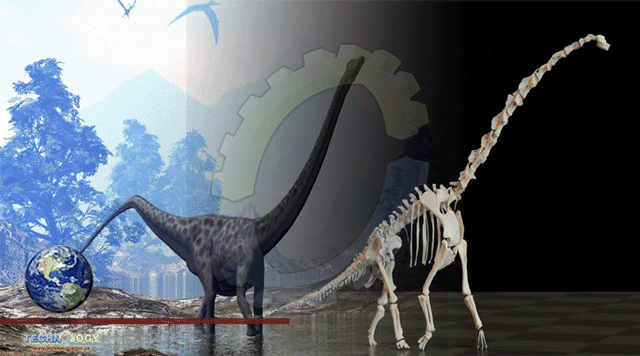Giant long-necked dinosaurs walked with a gait that was different from that of any living animal, according to a new method for learning an animal’s stride pattern from its footprints.

Unlike elephants, which take two steps on one side, then two steps on the other, sauropods had a diagonal gait, with each step of a front leg closely followed by the hind leg on the opposite side.
This would have allowed the 50-plus-tonne animals to keep their wide frames in balance, says Jens Lallensack at Liverpool John Moores University in the UK.
“Everybody always assumed that sauropods walked like modern elephants, but they didn’t, and we think that’s because the sauropods were just so much broader,” he says.Lallensack and Peter Falkingham, also at Liverpool John Moores University, suspected that previous studies looking at footprints alone weren’t telling the full story.
So they developed a new method of footprint analysis that scrutinises variations in tracks from one stride to the next, giving critical information about footfall timing, says Lallensack.
The pair tested their method on the tracks of modern four-legged animals, including three dogs, two horses, a camel, an elephant, a red fox and a raccoon.Finding the method to be reliable, they then analysed fossilised Lower Cretaceous footprints of sauropods from three sites in what is now Arkansas, where the tracks run in a straight line across distances ranging from 47 to 93 metres.
The long-necked dinosaurs (sauropod) tracks didn’t match any of the modern animals they analysed, says Lallensack. Instead, they showed a gait that somewhat resembled a horse’s trot, but instead of landing at the same time, the front foot touches down just before the hind foot on the opposite side.
“The sauropods were actually doing the opposite of the elephants,” says Lallensack.
This diagonal gait would have stabilised the giants by ensuring they always had at least one foot on the ground on each side. The only animal alive today with a gait somewhat close to that of the sauropods is the hippopotamus, which is also a heavy animal with widely set legs, but it has more of a trotting gait.
“The tracks were spaced more distantly from each other [than those of modern animals], so these sauropods were really broad,” says Lallensack.
If they had a lateral gait like that of elephants, it “would mean a lot of swaying side to side”, he adds. “And if you’re a really high animal, which is really, really heavy, then it’s really unstable and causes immense stress on muscles and bones. This would be a huge problem.”
Source: News Scientist